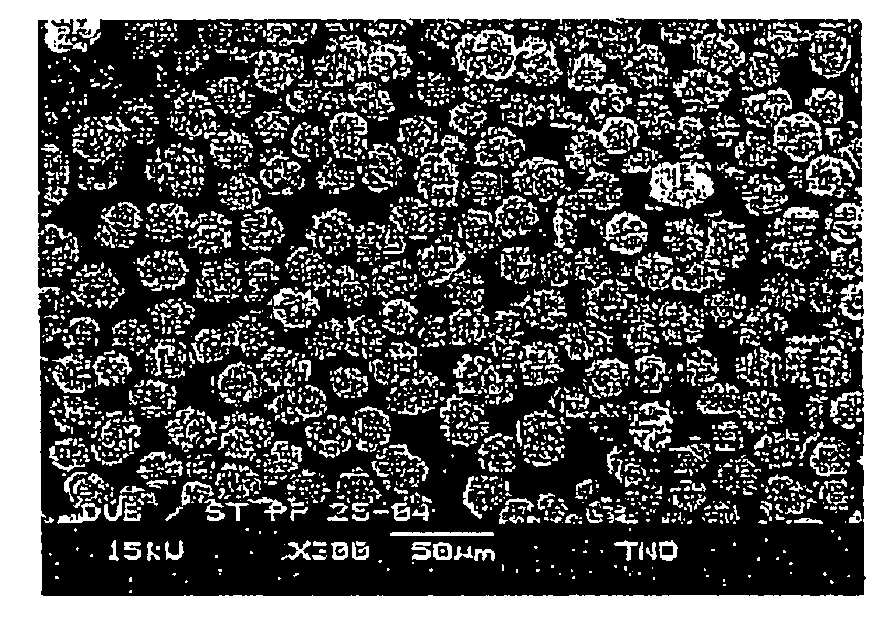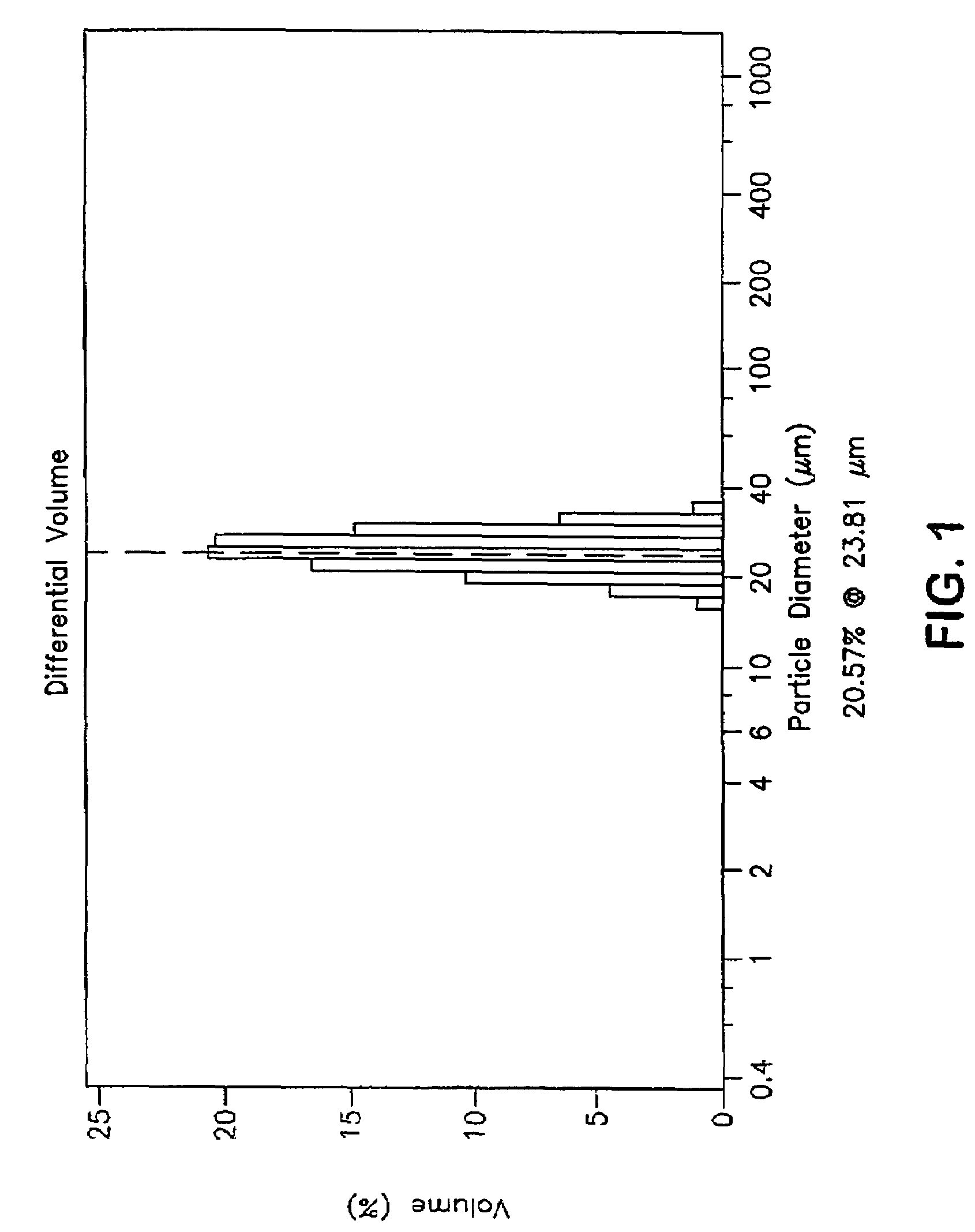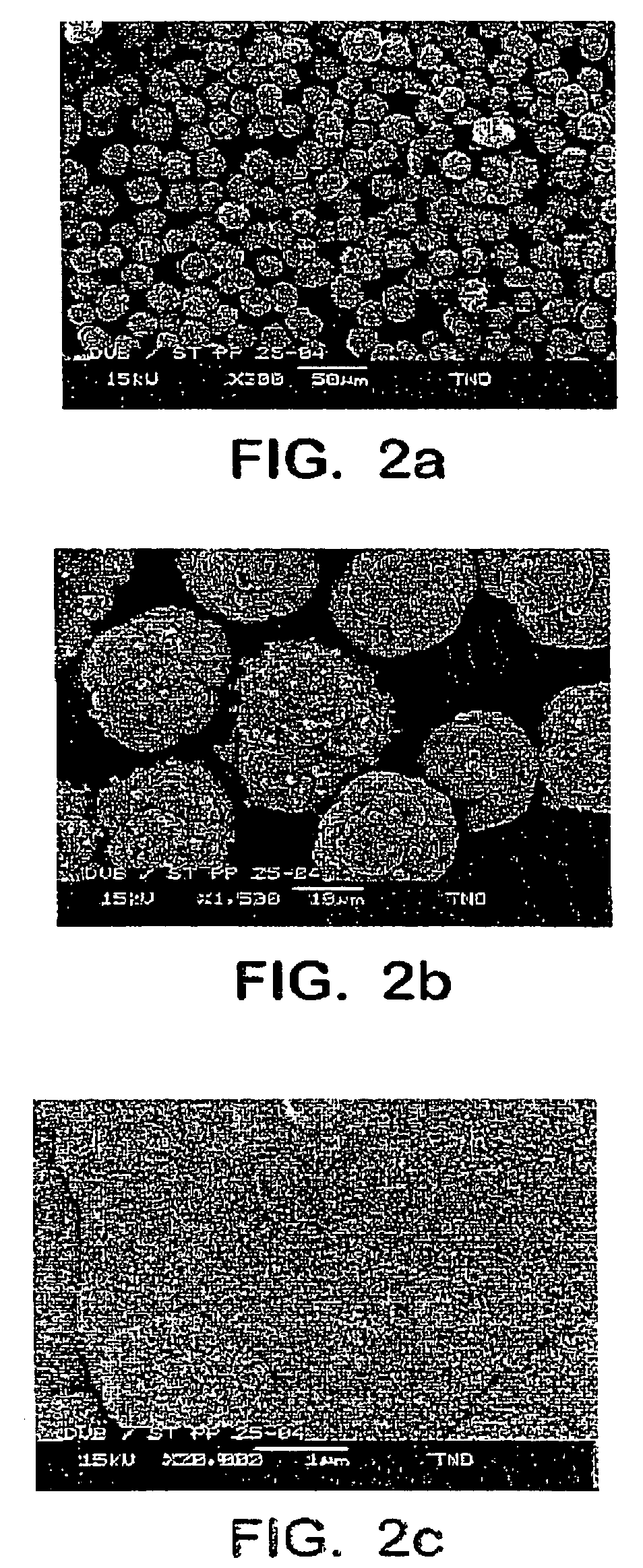Method of preparing spheroid polymer particles having a narrow size distribution by dispersion polymerization, particles obtainable by the method and use of these particles
a technology of spheroid polymer particles and dispersed polymerization, which is applied in the field of preparing spheroid polymer particles having a narrow size distribution by dispersion polymerization, can solve the problems of less efficient separation, large peaks, and the need for these very large pores to allow unhindered diffusion, so as to improve preparation and reduce costs
- Summary
- Abstract
- Description
- Claims
- Application Information
AI Technical Summary
Benefits of technology
Problems solved by technology
Method used
Image
Examples
example 1
Synthesis of Particles by Dispersion Polymerization in a One-Pot Reaction
[0051]A 5 liter four necked round-bottom flask equipped with a stirrer was charged with 2340 ml of a 20% (w / v) NaCl solution. To the stirred NaCl solution, a solution was added of 625.44 grams of divinylbenzene (DVB) and 623.67 grams of styrene (ST) in 258.65 grams of 1-decanol. Both divinylbenzene and styrene were freed from the phenolic stabilizer by filtration over silica. To the solution was added 2.60 grams of azoisobutyronitril (AIBN) dissolved in 66.95 grams of 1,4-dioxane. The mixture was stirred overnight at 70° C. in a water bath under a nitrogen atmosphere.
[0052]After polymerization, stirring was stopped and the particles were left to settle to the bottom of the flask. The clear supernatant was removed by suction and 2 liters of acetone were added. The particles were re-suspended. The suspension was refluxed for half an hour to extract the dioxane and 1-decanol out of the particles. After cooling, th...
example 2
IEX Chromatography of Proteins on Spheroid DVB / ST Particles
[0056]Another application of the chromatographic usefulness of the spheroid DVB / ST particles is their conversion into an ion exchange material. This conversion was done by first chloromethylating the surface, and then reacting the chloromethyl groups with an tertiary amine, thereby creating particles bearing quaternary ammonium groups (scheme 1).
[0057]
The particles thus modified are useful for protein purification in the IEX mode.
[0058]An example of a protein separation in the IEX mode is given in FIG. 3. The DVB / ST particles, synthesized as disclosed hereinabove, were chloromethylated and subsequently reacted with N,N-dimethylethanolamine according to scheme 1. The material was packed into a 150 cm×4.6 mm HPLC column and tested.
[0059]FIG. 4 shows a reversed phase separation of four proteins, i.e. ribonuclease A, cytochrome C, holo-transferrin and myoglobin, using spheroid DVB / ST particles prepared according to the invention...
PUM
| Property | Measurement | Unit |
|---|---|---|
| particle size distribution | aaaaa | aaaaa |
| particle diameter | aaaaa | aaaaa |
| particle size | aaaaa | aaaaa |
Abstract
Description
Claims
Application Information
 Login to View More
Login to View More - R&D
- Intellectual Property
- Life Sciences
- Materials
- Tech Scout
- Unparalleled Data Quality
- Higher Quality Content
- 60% Fewer Hallucinations
Browse by: Latest US Patents, China's latest patents, Technical Efficacy Thesaurus, Application Domain, Technology Topic, Popular Technical Reports.
© 2025 PatSnap. All rights reserved.Legal|Privacy policy|Modern Slavery Act Transparency Statement|Sitemap|About US| Contact US: help@patsnap.com



